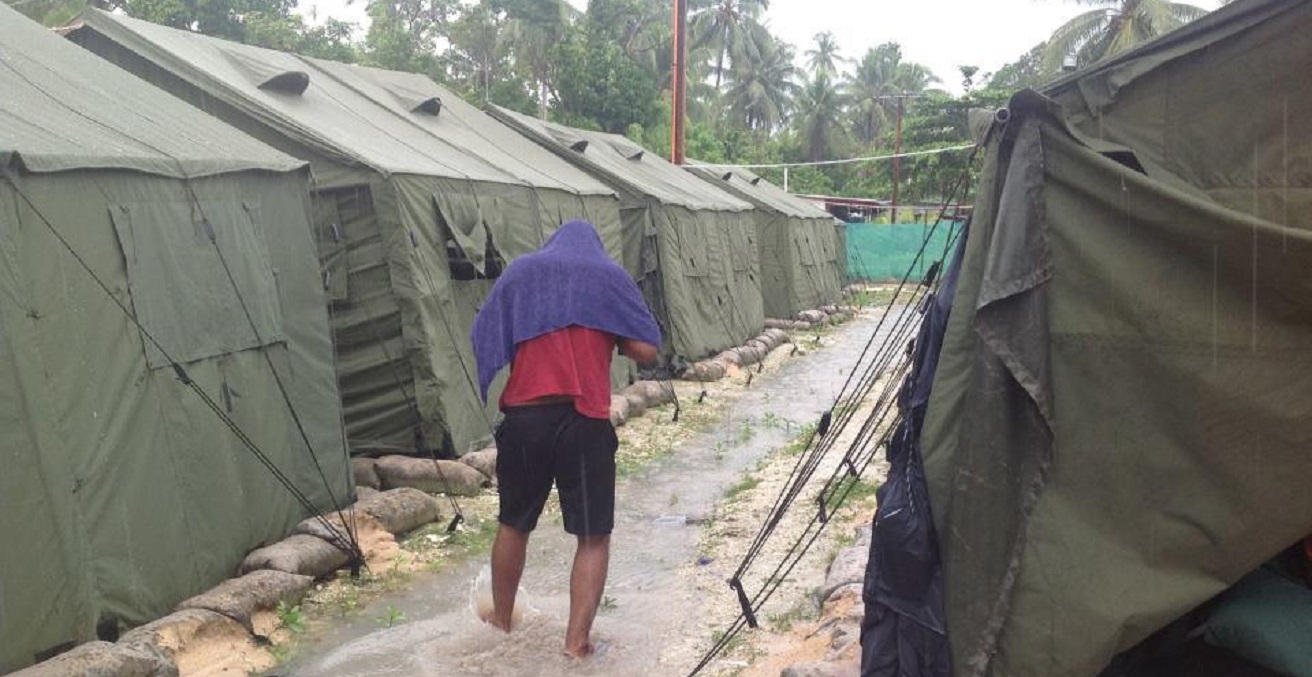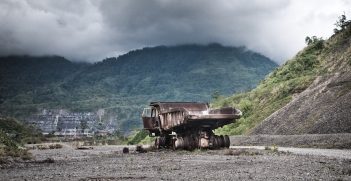New Year, Old Problem: Australia's Refugee Question

As 2017 draws to a close, Australia’s “intractable” refugee question remains unanswered. With Australia’s international image—not to mention the refugees themselves—at stake, how much longer can Canberra stall?
The year 2017 has been an eventful year in Australia’s ongoing offshore detention of asylum seekers and refugees in the South Pacific. The year started with newly elected President Trump casting doubt in a famous telephone call on whether the US would honour the deal made between Prime Minister Malcom Turnbull and President Barack Obama to take up to 1,250 refugees from Manus and Nauru.
In June, the Australian government agreed in an out-of-court settlement to a $70 million compensation payout to asylum seekers and refugees detained illegally in Manus. The international spotlight returned to Manus in October and November when the Australian and Papua New Guinea governments belatedly closed the controversial detention centre and moved its residents to other centres on Manus, amidst prolonged protests from refugees and refugee advocates. Another court decision—this time by the PNG Supreme Court—has given the refugees and asylum seekers a route to sue for compensation from the PNG government for their illegal detention.
The year is now ending, perhaps fittingly, with an announcement that almost 200 refugees from both Manus (60) and Nauru (130) will leave for the US as early as January 2018, alleviating ongoing concerns that the Trump administration might renege on the Obama-Turnbull agreement or that the refugees would not pass the extreme vetting processes adopted by the US. Only 52 refugees from Manus (25) and Nauru (27) have so far departed for the US since Trump came to power.
While the news about resettlement in the US is welcome, it still leaves hundreds of people on Manus and Nauru in limbo. There are reportedly more than 2000 asylum seekers and refugees now residing on Manus and Nauru. The majority of detainees in both processing centres have been found to be refugees, with 730 positive determinations on Manus and 1,062 positive determinations on Nauru.
Australia could lower the numbers of refugees still on Manus or Nauru further by accepting the New Zealand government’s offer to take 150 refugees. Canberra has used varying reasons to justify its long-standing refusal to accept this offer. One is the belief that once in New Zealand, those refugees could obtain New Zealand citizenship and migrate to Australia, thus defying Australia’s insistence that no asylum seeker who arrived by boat would ever settle on Australian territory. Another is that it would entice people smugglers to begin plying their trade to New Zealand’s shores. Prime Minister Turnbull says he wants to conclude the arrangement with the US before considering other offers. Although Immigration Minister Peter Dutton is vehemently opposed to resettling refugees in New Zealand, pressure from other members of parliament and from Papua New Guinea may lead to reconsideration in the new year.
The governments of both Papua New Guinea and Nauru have rejected permanent resettlement of the refugees in their countries but it is unclear how long they will be patient with Canberra.
The Nauru government has been dependent on the revenue that comes from hosting the regional processing centre but it will struggle to manage the centre’s impact on Nauru’s small population over a long period of time without negative consequences. The remoteness of Manus province might help to minimise the impact of the detention centre on PNG’s broader population but, as I have argued previously, Australia’s detention of refugees on Manus has a deleterious effect on its relationship with Papua New Guinea. With the PNG budget in such a dire situation, the government in Port Moresby will be unable to meet any future court order to pay compensation to refugees and may very well step up pressure on Canberra.
Figures released earlier this year showed the federal government has spent $5 billion on offshore immigration detention since 2012. A Parliamentary Library report calculates that Australia has spent more than $1 million for each of the 2,000 people who have been detained at the detention centre on Manus.
The Australian government has just committed, in the Mid-Year Economic and Financial Outlook (MYEFO) released this month, to an additional $25.1 million in 2017-18 to “continue regional processing arrangements in Papua New Guinea and Nauru”: additional, that is, to the $713,641 million for offshore detention already committed in the 2017-2018 budget. Given this planned expenditure, it would seem Australia is not counting on refugees moving out of Manus and Nauru in significant numbers.
It is worth noting that in the current financial year, Australia will spend:
- $739 million on maintaining 2,000 refugees and asylum seekers on Manus and Nauru;
- $546 million in aid to the 8 million people of Papua New Guinea; and
- $25 million in aid to the 13,000 people of Nauru.
Continued high Australian expenditure on keeping the refugees in Manus while the PNG government cannot distribute lifesaving medicines to its population or pay the rent on government offices seems particularly incongruous.
The Australian government’s determination that the refugees residing on Manus and Nauru never come to Australia and its inability to find other homes for all of them has created what one MP calls an “intractable problem”. There are many intractable problems in international affairs but this is most certainly not one of them. The solution is a straightforward one and entirely within the authority of the federal cabinet to implement. It is high time it did so.
Jenny Hayward-Jones is a Lowy Institute non-resident fellow and former director of the Melanesia Program at the Lowy Institute. She was an officer in the Department of Foreign Affairs and Trade for 13 years, serving in the Australian missions in Vanuatu and Turkey.
This article is published under a Creative Commons Licence and may be republished with attribution.





